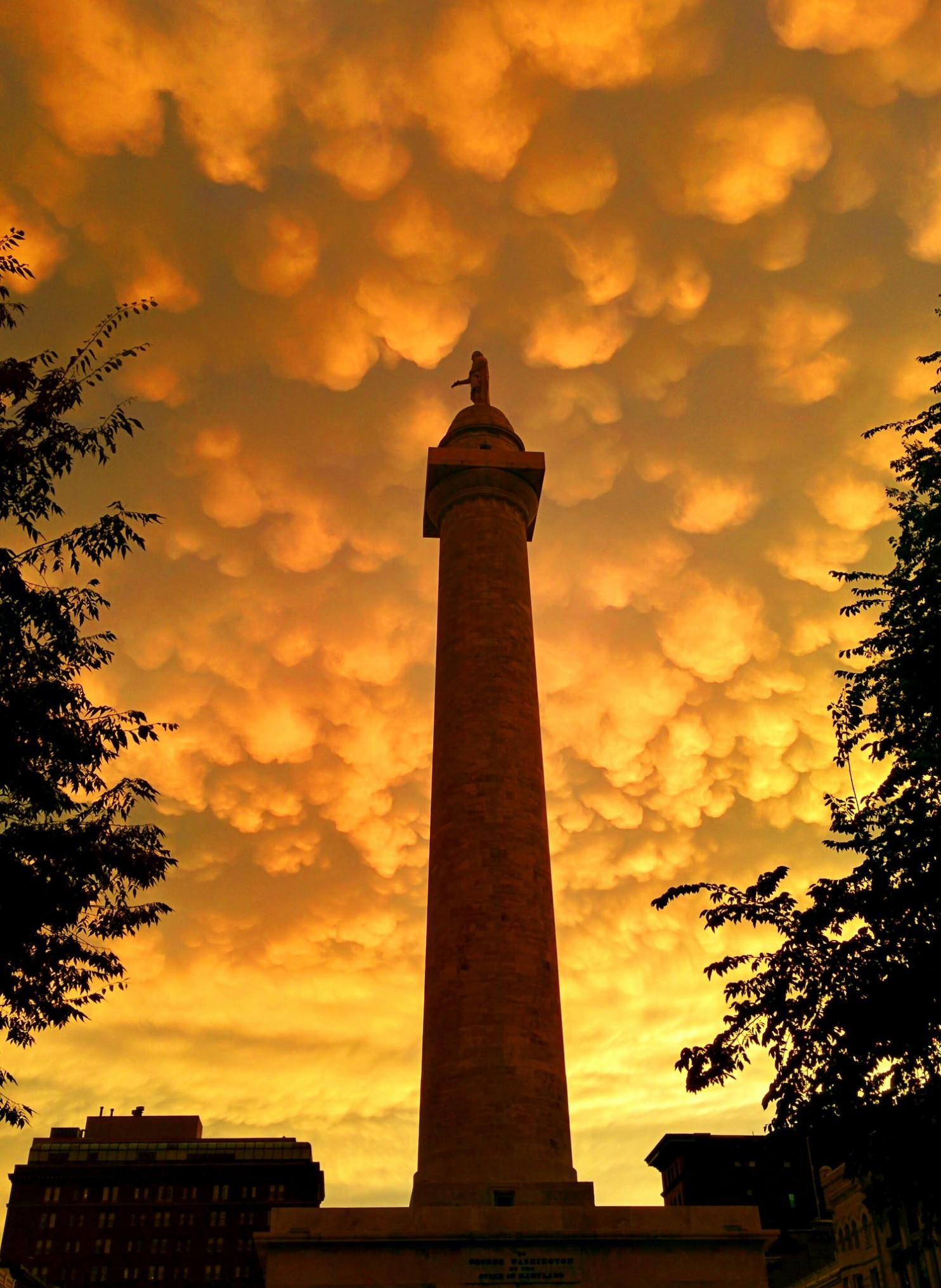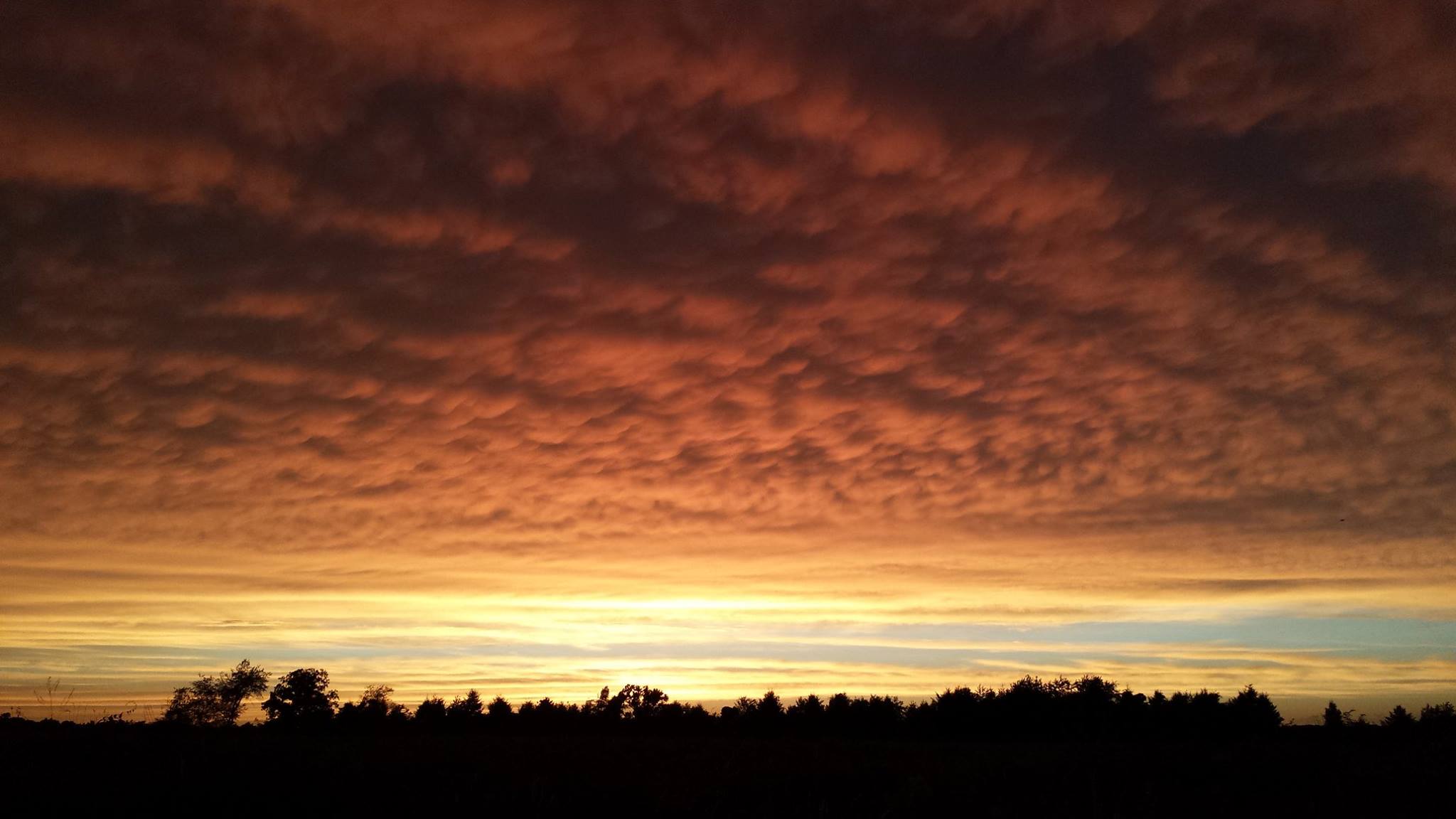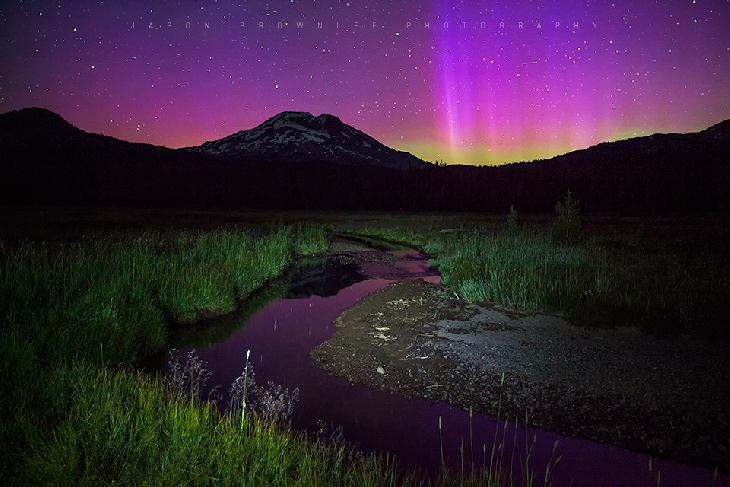12:00 PM | Recap of yesterday’s severe storms and spectacular sunset and also an update on the solar storm
Paul Dorian
 [Mammatus clouds over the Washington Monument in Baltimore, MD last night following the storms; courtesy Washington Post/Capital Weather Gang]
[Mammatus clouds over the Washington Monument in Baltimore, MD last night following the storms; courtesy Washington Post/Capital Weather Gang]
Discussion
Severe storms Severe weather indices were off the charts yesterday from the DC metro region eastward to southern New Jersey and northward into southeastern Pennsylvania and indeed nasty thunderstorms pounded much of this region at the end of the day. Hundreds of thousands of people lost power in this region and there were downed trees in numerous locations. Hail was not a widespread feature with this system; however, there were isolated reports of massive - perhaps record-breaking - hailstones in northern Maryland (Timonium) that were amazingly the size of a softball. Wind gusts as high as 70 mph were reported in King of Prussia, PA, 58 mph in Gaithersburg, MD, and the 5th highest gust ever recorded of 72 mph was measured at Philly International Airport. A tractor-trailer on Route I-95 in Chester, PA was overturned by the powerful winds. The National Weather Service is now investigating whether a possible tornado touched down in southern New Jersey – there were at least 4 reports of funnel clouds in southeastern PA and southern NJ.
 [Mammatus clouds at sunset last night in East Norriton, PA; courtesy Vencore employee John Kelley]
[Mammatus clouds at sunset last night in East Norriton, PA; courtesy Vencore employee John Kelley]
Spectacular sunset The sunset turned out to be quite spectacular following the powerful storms due to a lucky combination of fast-moving multiple-layered clouds and the timing of the day. There was a brief period of mammatus clouds that followed the storms and these can make for spectacular scenes at sunset. Mammatus clouds are often associated with severe weather and are typically seen following storms in areas of sinking air. These clouds look like small pouches hanging beneath a deck of higher clouds and they form as air in the cloud cools and sinks. As the sun reached the horizon, the sky colors tended to change from an orange/yellow to a pink or red.
Solar storm
A huge solar storm erupted on the sun this past Sunday – perhaps the biggest since 2005 – and it sent waves of plasma towards the Earth that have produced northern lights in many mid and high latitude locations. Computer forecast modeling suggests another coronal mass ejection (CME) will arrive at the Earth’s magnetic field early tonight and this could generate more northern lights. The intensity of the storm is always hard to predict, but aurora watchers should be on alert and skies should cooperate through the night.
 [Northern lights as seen last night in Oregon; courtesy spaceweather.com]
[Northern lights as seen last night in Oregon; courtesy spaceweather.com]

